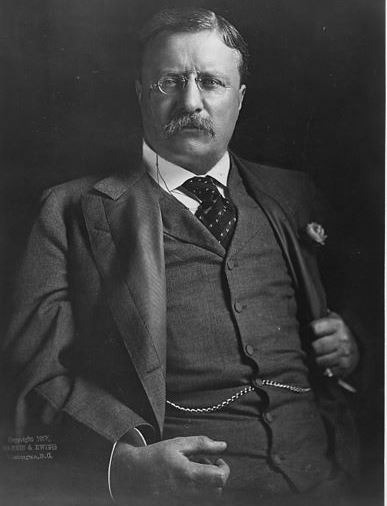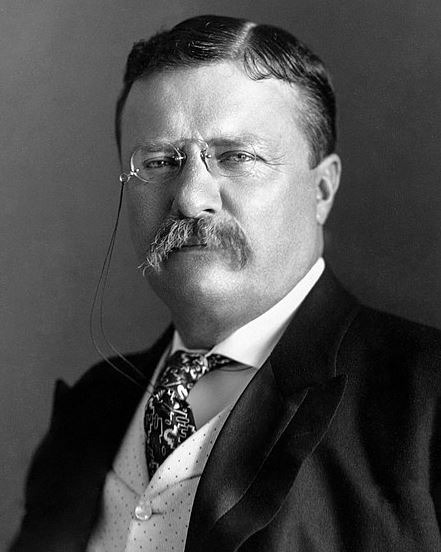Theodore Roosevelt remains to be one of the most popular and fascinating presidents of the United States. Donning many hats, such as a father, soldier, statesman, conservationist, and outdoorsman, he captures the hearts of many and has been a constant top-ranking pick on expert’s lists and people’s polls. Some politicians even regard Roosevelt as their inspiration and often compare themselves to him, proving the high respect many devote to him.
Powered by his sheer strength, strong personality, high intelligence, cunning wit, and grace, Roosevelt changed the American landscape and brought positive change. Over a century later, after his death, his accomplishments and legacies also continue to be left, solidifying his status as the forerunner among modern U.S. presidents. In this article, let’s discover why the 26th president is so popular and what makes him a true icon.
1. He was a skilled peacemaker.
Though famous for his aggressive foreign policies, Roosevelt was also a great diplomat. In 1906, he was awarded a Nobel Peace Prize for brokering the peace settlement in the Russo-Japanese war from 1904 to 1905. While there was initial resistance, the eventual successful peace negotiation between both sides is deemed to have delayed the onset of the First World War by at least a decade.
In another international crisis, Roosevelt also used arbitration to resolve disputes between Germany and France over the status of Morocco. Many historians consider Roosevelt’s intervention warded off a world war that could have ravaged entire Europe and Asia. A skilled peacemaker, his actions were beneficial in strengthening the ties of the United States with other countries and in advancing American interests.
2. He fought for Americans’ equal opportunity to succeed.
Roosevelt fought hard to give all Americans a “Square Deal” between businesses and labor as part of his famous domestic program of the same name. It revolved around three basic ideas or the three C’s, namely: control of corporations, consumer protection, and consumer protection, which aimed to provide everyone equal chances to succeed.
Actions he took as part of the “Square Deal” include supporting labor laws for the working class, preserving the environment, regulating big businesses, controlling railroad rates, and protecting the consumers.
Roosevelt deemed that the government had to do its part and prevent large corporations whose concern was only to defraud the public and reap massive wealth. Such an idea influenced succeeding presidents to expand and strengthen the role of the government in the economy.
3. He was a Trustbuster.
In 1980, the Sherman Antitrust Act was passed, giving the federal government the power to start proceedings against trusts and break them. Trusts were rival firms that joined together, creating a larger organization that had the power to monopolize a given industry.
Though the said act was already existing a decade before Roosevelt entered the White House, it was only during his time when it was made into full use, and he began busting up these big-time monopolies as part of his “Square Deal” program.
In 1904, Roosevelt initiated a lawsuit against Northern Securities Corporation, and the Supreme Court ruled that the railroad monopoly was unjustly scheming tricks to fix prices. Thus, they had to be dismantled.
That was only one as Roosevelt sued over 43 other huge businesses. Moreover, he established the Bureau of Corporations (today’s Federal Trade Commission), which serves as the country’s financial watchdog agency.
4. He was a championed conservationist.
Roosevelt has an immense love for nature and the great outdoors. He was the first statesman to put conservation on a national scale, and no one can match what he had done in terms of what he has done in protecting land and wildlife. During his presidency, he established five national parks and four national game reserves and set 51 federal sanctuaries for birdlife.
Roosevelt also created 18 national monuments, including Muir Woods, El Morro, Petrified Forest, Devils Tower, and the Grand Canyon. Plus, he also designated nearly 100 million acres of land as national forests. All in all, the land set aside spans 200 million acres. That’s nearly five times the land dedicated by all the other U.S. presidents combined.
5. He inspired the Teddy Bear.
Also an avid hunter and a passionate taxidermist, Roosevelt went on a trip to Mississippi to hunt bears. While the other hunters in the group were successful in locating one, he didn’t find any. Holt Collier, one of his loyal assistants, felt bad for the president and cornered one old black bear using the dogs. Collier tied the bear to a tree for Roosevelt to shoot.
Yet, Roosevelt declined and spared the bear, stating that it was very unsportsmanlike. Though he had someone else do it to put the old bear out of misery. The story soon reached the press and became widely popular.
Morris Michtom, a candy shop owner in New York who also made stuffed animals, dedicated a black bear plush toy to the president, naming it “Teddy’s Bear.” Able to secure Roosevelt’s permission, he displayed it in the shop window and mass-produced the teddy bear. It catapulted into massive popularity and remained a favorite childhood toy.
6. He paved the way for the construction of the Panama Canal.
In 1903, Roosevelt supported Panama’s independence from Colombia by sending warships as a show of force and preventing interference from the latter country. In line with this, the Hay-Bunau-Varilla Treaty was signed, giving the United States the exclusive rights to build the waterway across the Isthmus of Panama.
The Panama Canal was advantageous for the United States as it allowed easier sailing between the East and West Coasts. Thus, revolutionizing international trade and serving as a strategic location for protecting national safety.
Construction of the waterway started immediately and was finished in 1914. It was a huge feat for the country, and even Roosevelt regarded the Panama Canal as his most significant international achievement as president.
A fun fact: Roosevelt was the first president to go abroad while in office when he went to Panama City in 1906 to inspect Panama Canal’s construction. He departed on November 9th and returned on November 26th of the same year.
7. He is the youngest U.S. president in history.
While John F. Kennedy holds the distinction of being the youngest U.S. president to have been elected for the position at 43 years old, Roosevelt remains as youngest U.S. president. At 42 years old, he took office after President William McKinley’s assassination. Prior to being a president, Roosevelt already had a wide experience, having served many jobs and positions like President of the Board of Commissioners for the NYPD, the Assistant Secretary of the Navy, and Governor of New York.
8. He was a voracious reader and a prolific author.
Roosevelt was among the most well-read U.S. Presidents. Keen to learn and adding more knowledge, he read at least one to three books daily in many different languages. Today, thousands of books are still housed in Roosevelt’s home in Sagamore Hill.
As such, it’s no surprise that he is also a prolific author and the most literary U.S. president. In his lifetime, he wrote about 35 books, including popular ones like “The Strenuous Life,” “The Rough Riders,” “African Game Trails,” and “Letters to His Children.” For the majority of his life, he supported himself using the income he earned from his notable books.
Final Words
His accomplishments are enough to support his immense popularity. Yet, his set of skills, strong enthusiasm, charisma, and rapport also helped him change the executive office forever. A blend of his achievements and his personal character are what made him such an iconic president even up to this time.


